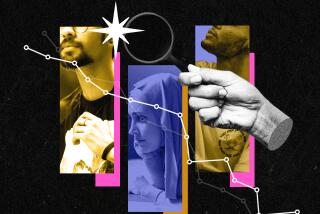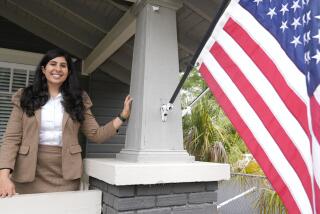Faster, Wider Census Is in Works, U.S. Says
- Share via
WASHINGTON — The federal census in the year 2000 will have fewer questions and the traditional mail survey will be supplemented by forms available at convenience stores, shopping centers, churches and homeless shelters as the government tries to persuade an increasingly reluctant public to cooperate in the vast count, officials said Wednesday.
Even with a special advertising campaign in many languages, promotions on television, radio and the Internet, the government expects only about 60% of the population to send back the forms in the mail--and that would be a dramatic contrast to an 85% response rate in 1970.
For the first time, census forms will be available outside the mail, distributed in other places in hopes that some of those who ignore the mail will take time to answer the survey’s eight brief questions in another locale.
“We want to make this the 10-minute census to encourage the majority of Americans to fill it out,” said Sylvia Harris, a graphic design expert from Yale University who helped the Census Bureau prepare the current test mailings, with eight questions in a yellow-and-blue booklet.
The Census Bureau is now testing the questions and wording on the short form, with 17 different versions being mailed around the country.
The basic form, mailed to nearly all 130 million U.S. addresses, will be easier to read and shorter than the 1990 basic form, which had 17 questions.
The long form, a detailed version mailed to about 14 million households, also will be compressed, with about 48 or 50 questions, down from 55 in 1990, according to Martha Farnsworth Riche, the Census Bureau director.
The census, which has had persistent problems with an undercount of blacks and Latinos, is making special efforts to improve the accuracy of its survey. For the first time, its master file of addresses will be shared with 39,000 state and local governments to assure that all communities and neighborhoods are completely covered.
The government also will turn to marketing and advertising agencies to reach as many Americans as possible, figuring out ways, for example, to reach the “18- to 25-year-old male Hispanic renters in Hartford [Conn.] we didn’t get last time,” Riche said.
The census will be conducted “in the face of a very strong antagonism toward what government does and what you tell government about yourself,” Alice Rivlin, director of the Office of Management and Budget, told a gathering at the Commerce Department where the Census Bureau unveiled its plan for the decennial count.
The 1990 census, which counted 98.4% of the population accurately was a “success as an exercise in gross demography,” but was viewed as a failure as “a political and historical ritual, as a tool of legitimacy,” said Everett M. Ehrlich, undersecretary of commerce for economic affairs. Four million people were missed in the count. Big-city mayors complained that members of minority groups were not counted accurately and many citizens viewed the census as “a cold form that was intrusive, that didn’t invite them to participate,” Ehrlich said.
Some cities sued the Census Bureau, arguing that the undercount among minority group members deprived the cities of the full benefits of the tally, which is used to calculate the apportionment of House seats and numerous formulas for distribution of funds for schools, hospitals, highways and other projects and services.
By sharing its address files with local officials and conferring with them repeatedly before the count, census officials hope to gain the confidence of state and local officials and avoid another legal challenge.
The census will cost an estimated $3.9 billion in the year 2000. This compares with a final price tag of $2.6 billion for the 1990 census.
More to Read
Sign up for Essential California
The most important California stories and recommendations in your inbox every morning.
You may occasionally receive promotional content from the Los Angeles Times.












